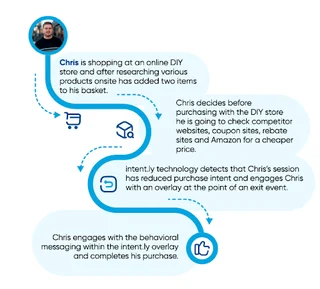Heuristics Series Part 1: Scarcity

What are heuristics?
Heuristics are mental shortcuts or rules of thumb that our brains use to simplify decision-making and problem-solving processes. They are cognitive strategies that allow us to make quick judgments and navigate the complexities of the world around us. Instead of engaging in lengthy and resource-intensive analytical thinking, heuristics help us make efficient decisions by relying on patterns, past experiences, and readily available information. These mental shortcuts serve as cognitive guidelines that guide our thinking and behaviour. They are developed based on our personal experiences, cultural influences, and social norms. Heuristics can be useful in situations where time is limited, information is incomplete, or the decision-making process is complex. However, they can also lead to biases and errors in judgement, as they may oversimplify or overlook important information. One of the best examples of a heuristic that we can all relate to is quite simply catching a ball that is thrown or hit in the air. If you were to actually calculate where to place your hands to correctly catch that ball, you’d be attempting to do some quick fire A-level maths to work out the height of the ball, the speed it’s travelling, its peak trajectory, and so on. The reality is by the time you’d worked that out the ball would’ve landed about 10 minutes prior. To combat this, we have learned the ‘gaze heuristic’, which at the most basic level, ignores all casual relevant variables (the maths!) to make quick gut reactions and adjustments that enable you to successfully catch the ball within the given timeframe.
The scarcity heuristic
One of the most common heuristics that is extremely commonplace across marketing disciplines is the scarcity heuristic. The scarcity heuristic is a cognitive shortcut that leads us to believe that something is more valuable or desirable if it is rare or in limited supply. This heuristic can be seen in many areas of our lives, from the way we shop in stores for groceries to the way we shop online.
In stores, the scarcity heuristic can be observed when shoppers rush to buy items that are advertised as being in limited supply. For example, if a grocery store puts up a sign that says “limited time only” or “while stocks last” next to a particular item, shoppers are more inclined to believe the item is rare or hard to come by, and they will be more likely to make the purchase immediately. The scarcity heuristic can lead to impulse buying, where shoppers make purchases based on emotions rather than rational thought.
In online shopping, the scarcity heuristic is often used by e-commerce websites to create a sense of urgency among shoppers. For example, online retailers may use countdown timers or “low stock” warnings to encourage shoppers to act quickly if they want to buy a particular item. A recent campaign test revealed a 10% increase in conversion rate by adding countdown messaging to the overlay.
When used appropriately as part of a shopper’s journey, the scarcity heuristic can be a useful conversion tool. For example, it can be used to motivate people to take action or to make decisions that are in their best interest. If a person believes that a particular opportunity is rare or hard to come by, they may be more likely to take advantage of it. In this way, the scarcity heuristic can be a useful motivator.
With scarcity being such a common heuristic, it can be observed in many areas of our lives. While the scarcity heuristic can lead to cognitive biases and irrational decisions, it can also be a useful tool when used within the context of a shopper journey. By understanding the role of the scarcity heuristic in our lives, we can make more informed decisions and avoid the potential pitfalls of this cognitive shortcut.
Look out for our next blog on the second heuristic that can influence shopper behaviour – complementarity – coming soon.


Chris ‘Ceej’ Johnson is CMO at intent.ly. With over 15 years’ experience in digital, affiliate and performance marketing, he has a passion for all things consumer behaviour and innovative advertising.
